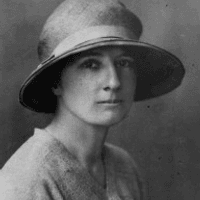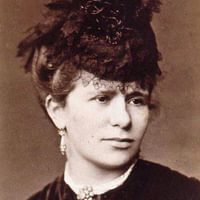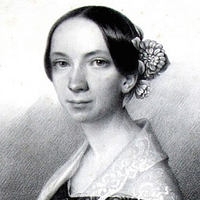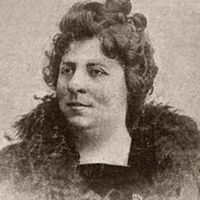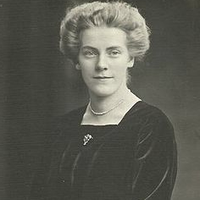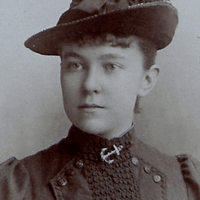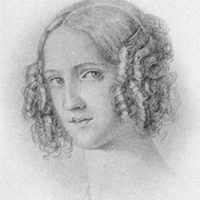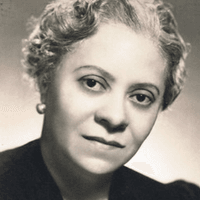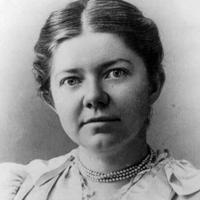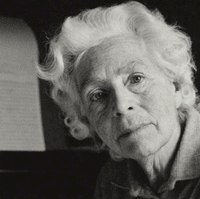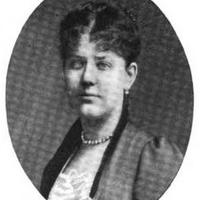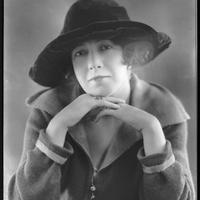Ina Boyle
Composer
Biography
Born in 1889, Ina Boyle spent almost all her life in her family’s large home in Enniskerry, a countryside village just south of Dublin. Though her prolific compositional output included works for voice, choir, chamber ensembles and orchestra, most of her music remains unpublished and unperformed. Only recently has she begun to receive recognition as one of the most significant Irish composers of the early twentieth century.
Boyle was drawn to music from childhood, learning first from her father, Rev. William Foster Boyle, and subsequently from her governess, with whom she studied violin and cello. By fourteen, she had begun composition classes with George Hewson and Charles Kitson in Dublin. Her musical education was supported via letter correspondence with her cousin-in-law Charles Wood, who was a professor of music at Cambridge and teacher at the Royal College of Music. His encouragement inspired Boyle to travel periodically to London between 1923-1939 and take composition lessons with Ralph Vaughan Williams.
Boyle’s early output demonstrates an elision of late nineteenth-century trends with Europe’s expanding tonal landscapes and emphasis on artistic individuality. This is especially evident in her technically astute instrumental scoring and harmonic experimentation, lauded in her famous first symphony, ‘Glencree’ (1927).
Primarily serious and introspective, Boyle developed an ability to juxtapose subtle wit with moments of tender intimacy. This developed from her earliest published works such as Elegy, a rhapsody for cello and orchestra, which won her first prize in the Sligo Feis Ceoil festival composition competition in 1913. Boyle also claimed second prize that year, for her setting of Walt Whitman’s ‘A Last Invocation’. In 1919, she became the first female composer to win a Carnegie Award with her orchestral rhapsody, The Magic Harp.
Boyle composed about seventy songs in her lifetime, thirty-three of which were recently recorded for Delphian by Paula Murrihy, Robin Tritschler, Ben McAteer and Iain Burnside (Ina Boyle: Songs, 2020). This collection explores a broad emotional palette, which Boyle communicates through harmonic and metric individuality, whilst mostly maintaining melodic simplicity. Her songs offer a glimpse into her rural introversion, particularly through her choice of texts and sensitivity to word-setting. She had an affinity for the vivid imagery of Edith Sitwell’s work, setting ‘The Bringer of Dreams’ (1925, for soprano and piano), ‘Still Falls the Rain’ (1948, for contralto and string quartet) and later, ‘From the Darkness’ (1946-52, for contralto and orchestra, which combines excerpts from three Sitwell poems: ‘Invocation’, ‘An old woman’, and ‘Harvest’). Here, as in her 1930 set Five Sacred Folksongs of Sicily (1930, texts by Grace Warrack and translated into English), Boyle gravitates towards melancholic minor keys and, at times, modal mixture, observing both the intimacy of the song form and her texts’ poetic complexity.
Boyle set a range of texts, from Sitwell to W. B. Yeats (‘The Stolen Child’, 1912), Rudyard Kipling (‘Have you news of my boy Jack’, 1916) and Walter de la Mare (‘A Song of Shadows’, 1922, and later, ‘Three Songs by Walter de La Mare’, 1954-6). She also set poetry from the seventeenth century such as Robert Herrick’s ‘Eternity’ (1924) and drew from medieval English and Irish folk melodies. Her extensive knowledge of literature, art and poetry shaped her compositional approach and was mirrored in her instrumental works, many of which are preceded by a short literary quotation.
Like many of her song-writing contemporaries – Vaughan-Williams, Elizabeth Maconchy and others – Boyle typically gives the piano as much voice as the singer, creating affective depth even in deceptively simple songs. ‘The Joy of Earth’ (1914, George Russel), ‘Since thou, O fondest and truest’ (1924, Bridges) and, much later, ‘Carrowdore’ (Ervine) – the first of her final song set, Looking Back (1960-66) – are characteristic examples.
In 1937, a letter from Vaughan Williams reiterates his support: ‘it is most courageous of you to go on with so little recognition. The only thing to say is that is sometimes does come finally’. But the outbreak of war in 1939 severed Boyle from life in London and her professional presence quickly faded. Elizabeth Maconchy, a life-long friend, recalled writing to Boyle throughout her final twenty years, during which time she lived in an unheated house, caring little for personal comforts or the external world. Maintaining her ‘visionary’ character and ‘original creative mind’, Boyle continued to compose in quiet isolation until her death from cancer in March 1967.
A list of Boyle’s works can be found here. Her manuscripts are preserved at Trinity College Dublin and some can be accessed online at Digital Collections TCD or via The Contemporary Music Centre, Ireland. Boyle wrote about her works in a detailed memorandum, and Ita Beausang, Séamas de Barra, and Sarah Burn have begun an important re-discovery of her life and music.
© Rachel Howe, 2022
SCORES
Ina Boyle's works remain in copyright in the UK.
Some scores may be available here through the Ina Boyle Society.
Where can I listen to Ina Boyle's songs?
Listen to 'The Joy of Earth' here.
Ina Boyle Songs - Wigmore Hall Recording Session (November 2020)
Song List
This list is likely to be of songs that have been performed at Oxford International Song Festivals and Oxford Song events, and may not be comprehensive of this composer's compositions. This database is ever growing as a work in progress, with further songs regularly being added.
| A mountain woman asks for quiet that her child may sleep (1927) | Ina Boyle |
| Eternity (1924) no.10 | Ina Boyle |
| Sleep Song (1923) | Ina Boyle |
| Song of Enchantment | Ina Boyle |
| The Joy of Earth (1914) | Ina Boyle |
| The Last Invocation | Ina Boyle |
| The Stolen Child | Ina Boyle |
